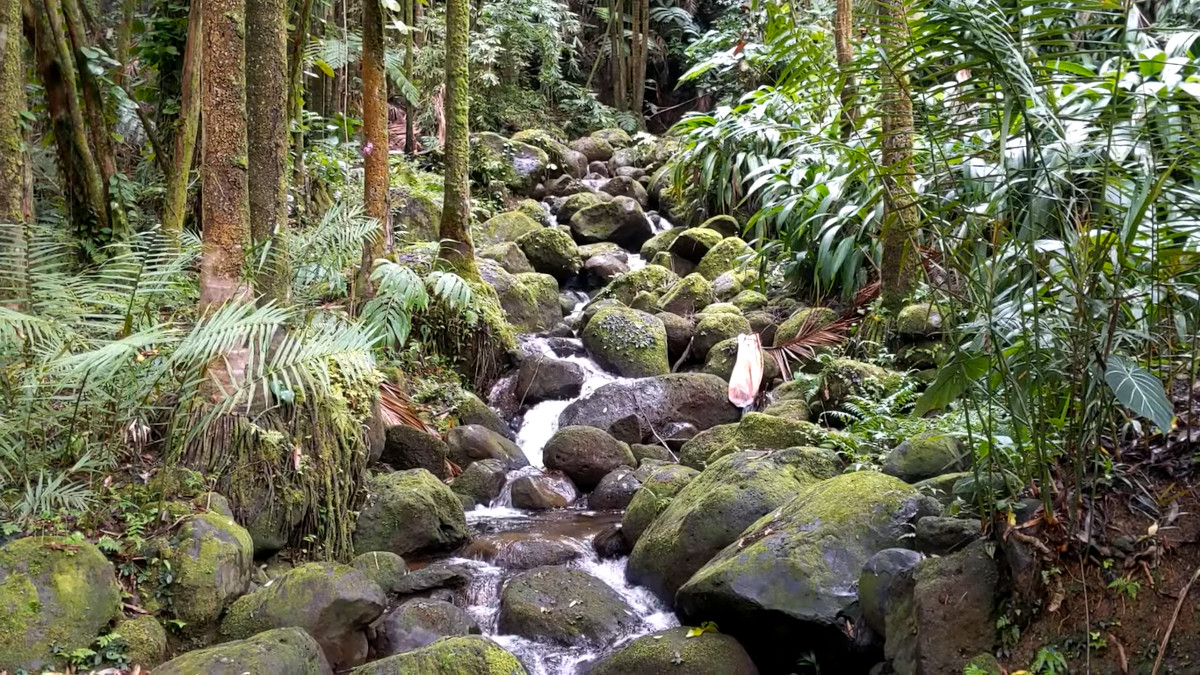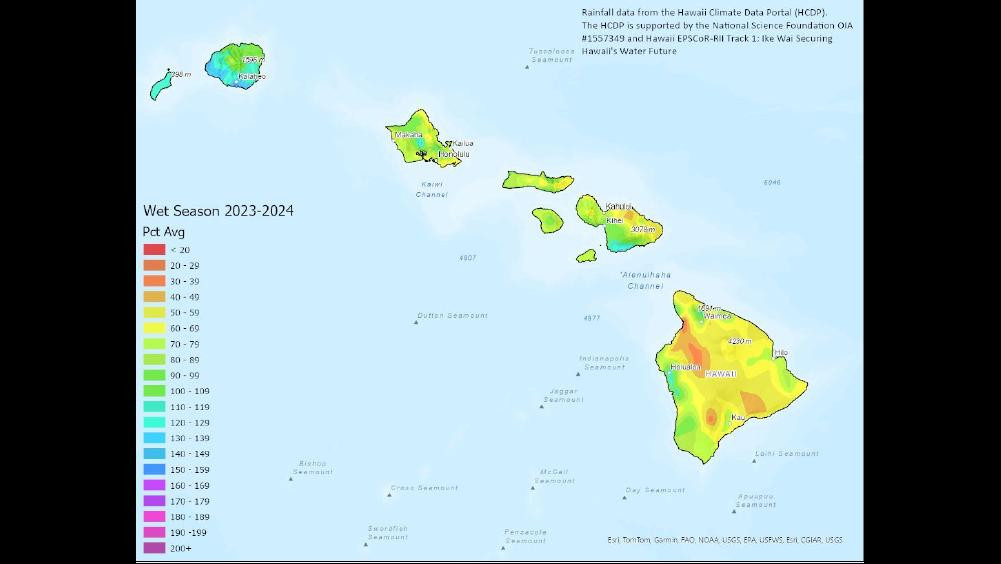(BIVN) – Forecasters expect to see below average precipitation through the rest of the dry season in Hawaiʻi, which runs from May through September, with the development of a La Niña weather pattern during the summer.
The NOAA National Weather Service and Climate Prediction Center held a news conference on Tuesday, during which they shared a summary of the recently ended Hawaiʻi wet season (October 2023 through April 2024), and gave their dry season outlook.
Meteorologists also said they are predicting a below-normal 2024 central Pacific hurricane season.
Forecasters noted that the west season started “with severe drought in portions of all four counties statewide, and extreme drought in localized areas of Maui and the Big Island.” The wet season was influenced by a strong El Niño event that peaked in late 2023 and weakened during spring 2024. Rainfall totals for the season “were near to below average at most locations and conditions were not as dry as anticipated,” the forecasters said.
On Hawaiʻi island, most windward rainfall totals were 50% to 80% of the average, while the rest of the island saw totals of 30% to 60% of the average. 58.63 inches of rain was recorded at Hilo Airport, the 7th driest wet season in the last 30 years.
Meteorologists say probabilities favor La Niña development during the summer, with the pattern expected to persist into 2025.
Although rainfall totals will be skewed by the unusual kona low (rare for the month of May), climate model consensus favors below average precipitation through the rest of the dry season.
The recent rain from the kona low may “help delay onset of significant drought, possibly until mid- to late-summer”, forecasters say, with an exception for the Humuʻula Saddle region of the Big Island, which has not been able to recover due to less rainfall than other areas.
“Impacts, once they start to occur, are expected to be the worst for non-irrigated agriculture, water systems dependent on surface water diversions, and residents relying on rainfall catchment,” the forecasters reported. “Due to late wet season rainfall, significant wildfire risk is expected to develop later than the normal late-July to early-August time frame.”



by Big Island Video News8:08 am
on at
STORY SUMMARY
HONOLULU - Climate models favor below average precipitation through the rest of the dry season, after an El Niño influenced wet season.